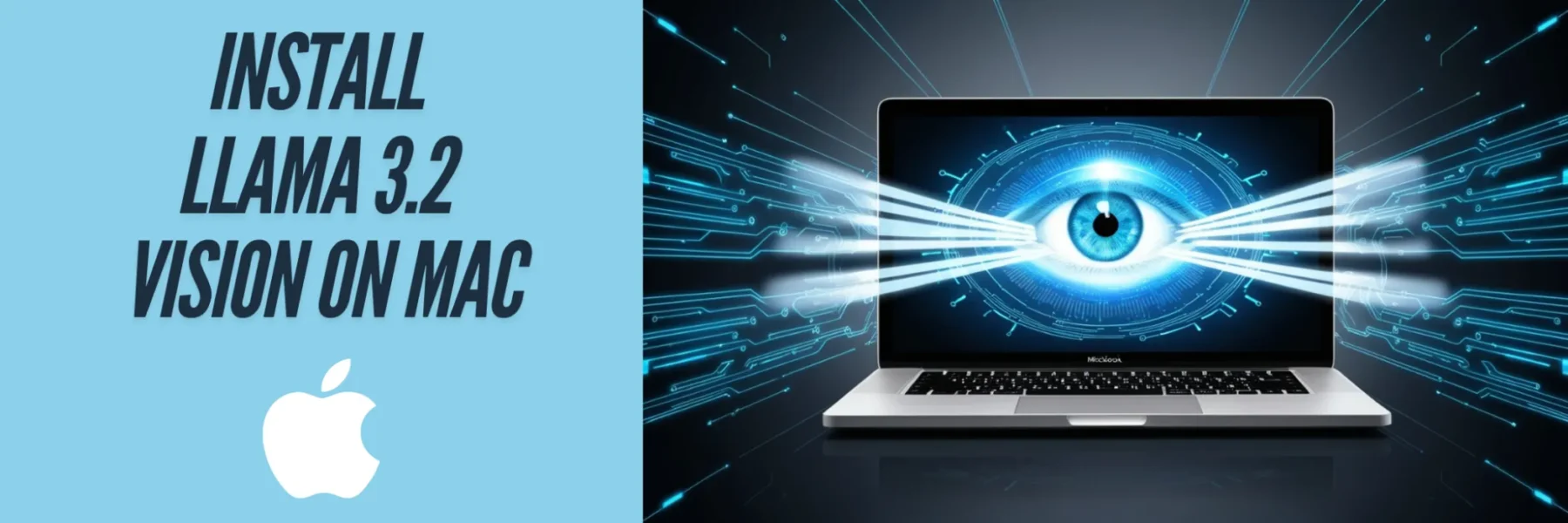Llama 3.2 Vision is a collection of advanced, instruction-tuned, multimodal large language models (LLMs) optimized for image reasoning, image captioning, and more. This guide will walk you through the steps to install and use Llama 3.2 Vision on your Mac M1, M2, or M3.
Prerequisites
Before installing Llama 3.2 Vision, make sure Ollama is installed on your Mac. If you haven’t installed it, refer to this guide: Step-by-Step Guide to Installing Ollama on Mac.
Installation Steps
1. Open Terminal
Press Command + Space, type Terminal, and hit Enter to open the Terminal.
2. Install the 11B Version
Run this command to download the 11B model (7.9GB):
ollama run llama3.2-vision3. Install the 90B Version
To install the 90B model (55GB), use this command:
ollama run llama3.2-vision:90b4. Verify the Installation
Once the installation is complete, you will see the >>> prompt. This indicates that the model is ready for interaction.
What to Do:
- At the
>>>prompt, type a question or a command to verify that the model is functioning properly. - Example Interaction:
Describe the contents of this image: /path/to/your/image.jpg.Supported Languages
- For text-only tasks, Llama 3.2 Vision supports: English, German, French, Italian, Portuguese, Hindi, Spanish, and Thai.
- For image+text applications, only English is supported.
Use Cases of Llama 3.2 Vision
Here are some practical applications of Llama 3.2 Vision:
1. Image Captioning
- Generate descriptive text for images, which is helpful for accessibility and content management.
- Example Use: Automatically caption photos for a photography blog.
2. Image Question Answering
- Answer questions about images for educational or analytical purposes.
- Example Use: Answering “How many people are in this picture?” for an event analysis.
3. Visual Reasoning
- Understand and analyze the relationships between objects in images.
- Example Use: Determining if there is enough space to park a car in an image.
4. Object Recognition
- Identify and classify objects within an image.
- Example Use: Detecting various items in a supermarket shelf image for inventory tracking.
5. Scene Understanding
- Provide contextual information about a scene, such as whether it’s indoors or outdoors.
- Example Use: Identifying a living room setting in a smart home system.
Example Code for Using Llama 3.2 Vision
1. Python Example
import ollama
response = ollama.chat(
model='llama3.2-vision',
messages=[{
'role': 'user',
'content': 'How many animals are in this image?',
'images': ['path/to/your/image.jpg'] # Replace with your image path
}]
)
print(response)2. JavaScript Example
import ollama from 'ollama';
const response = await ollama.chat({
model: 'llama3.2-vision',
messages: [{
role: 'user',
content: 'What is the person in this image doing?',
images: ['path/to/your/image.jpg'] // Replace with your image path
}]
});
console.log(response);3. cURL Example
curl http://localhost:11434/api/chat -d '{
"model": "llama3.2-vision",
"messages": [
{
"role": "user",
"content": "What is in this image?",
"images": ["<base64-encoded image data>"]
}
]
}'Note: For the cURL example, replace "<base64-encoded image data>" with the actual base64-encoded string of your image.
This tutorial should help you get Llama 3.2 Vision up and running on your Mac, and you can start exploring its diverse capabilities across image and text tasks. Happy experimenting!

